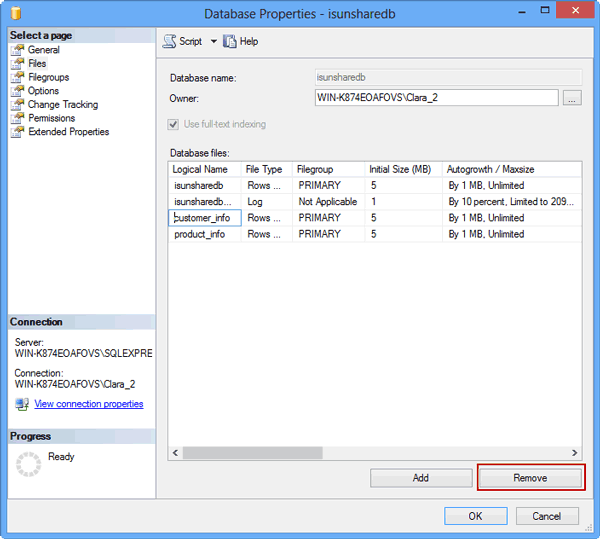Delete Sql Dump Files
There's no doubt that log file will become larger and larger with the growth of SQL Server database file. However, it will influence the running speed of computer and occupy more and more space. This is not what we expect to see. So sometimes, it is necessary to shrink even delete SQL Server log file.
The following introduced ways will be applied to SQL Server 2014/2012 to delete log file with SQL Server Management Studio or Transact – SQL.
Way 1: Delete SQL Server Log File in SQL Server Management Studio

Step 1: Shrink Server log file
- In SQL Server Management Studio, open the MANAGEMENT folder, then right click on SQL SERVER LOGS and say CONFIGURE. Check the LIMIT ERROR LOGS box and set the number to 30 (a month's worth). Now, set up a new job in the SQL Agent that runs spcycleerrorlog every night at midnight.
- You can delete it without corrupting the DB. However, you should try to find who created the dump and why (likely a partial or full backup, though a strange way to do so), and ascertain if it is still needed.
- Mysql databasename file.sql. In most cases you’ll need to create a database to import into. If the database already exists, first you need to delete it. In the following example the first command will create a database named databasename and then it will import the dump databasename.sql into it: mysql -u root -p -e 'create database.
1. Login in SQL Server Management Studio. In Object Explorer, expand that instance that is connected to SQL Server.

2. Unfold Databases and then right-click the database that you want to shrink.
I have approximately 250GB of dump files on my disk and they are consuming the space that is left rapidly. I don't know what to do. They are located in Microsoft SQL Server MSSQL15.MSSQLSERVER MSSQL Log Polybase dump. So, my question is. Can I delete them? How can you stop this from happening? Sorry for my bad English and for.
Microtype pro. 3. Turn to Tasks - Shrink, and then click Files.
Slui.exe 0x2a 0xc004e015. 4. Select the file type and file name.

Generally, log file will be shrunk after you click OK now. But if you want to set it in more detailed, options below can be selected.

Option 1: Select Release unused space check box.
Option 2: Select Reorganize files before releasing unused space check box.
If this is selected, the Shrink file to value must be specified. By default, the option is cleared.
Option 3: Enter the maximum percentage of free space to be left in the database file after the database has been shrunk. The value can be between 0 and 99. This option is only available when Reorganize files before releasing unused space is enabled.
But if we prepare to delete data, the primary data file cannot be made smaller than the size of the primary file in the model database.
Option 4: Select the Empty file by migrating the data to other files in the same filegroup check box.
Delete Sql Dump Files Pdf

5. Click OK.
Step 2: Delete SQL Server log file
1. In Object Explorer, make instance connected to SQL Server Database Engine and then expand that instance.
2. Expand Databases, right-click it from which to delete the file, and then click Properties.
3. Select the Files page. In the Database files grid, select the file to delete and then click Remove.
4. Click OK.
Way 2: Delete SQL Server Log File with Transact-SQL
If you are familiar with Transact-SQL, follow this way to work for SQL Server database or log file deletion.
Step 1: Empty SQL log file
1. Connect to the Database Engine.
2. From the Standard bar, click New Query.
3. Copy and paste the following example into the query window and click Execute.
USE UserDB;
GO
DBCC SHRINKFILE (DataFile1, 8);
GO
This example uses DBCC SHRINKFILE to shrink the size of a data file named DataFile1 in the UserDB database to 8 MB.
Step 2: Delete SQL Server log file
1. Connect to the Database Engine.
2. From the Standard bar, click New Query.
3. Copy and paste the following example into the query window and click Execute. This example removes the file test1dat4.
USE master;
GO
ALTER DATABASE AdventureWorks2012
REMOVE FILE test1dat4;
GO
Can I Delete Sql Dump Files
Comparing Way 1 to Way 2, the first way is undoubtedly easier for SQL Server new users. But command can work fast. However, it will be easier to controll failure rate when deleting SQL Server file using SQL Server Management Studio. In a word, they can shrink and then delete database file or log file. The difference is just the implementation.
Mysqldump
Related Articles:
